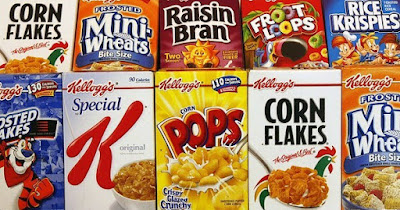The Danger Within: How Food Codes Conceal Risks in Processed Foods.
Welcome to the eye-opening world of processed foods and the deceptive labels they bear. Have you ever wondered about the mysterious food codes listed on your favorite snacks and packaged meals?
Well, get ready to dive into the hidden truths they conceal. In this exploration, we will uncover how these seemingly innocent food codes can actually mask various risks lurking within the very foods we consume. Together, we will shine a light on the deceptive practices and shed light on the potential dangers that may be lurking behind those innocent-looking labels. So, let's embark on this journey of discovery to unravel the secrets of food codes in processed foods.
Code E310 - Uncoding Propyl Gallate in foods.
Things to Know About Propyl Gallate: An Artificial Food Additive with Potential Health Risks. Propyl Gallate is an artificial food additive commonly used in cosmetics and pharmaceuticals. It is a whitish crystalline powder and can be found in various food products like meat items, microwaveable popcorn, soup mixes, chewing gum, mayonnaise, and frozen meals. Used mainly as an antioxidant.
One of its key properties is its antioxidant nature, which helps prevent food from going rancid by inhibiting the interaction of oxygen molecules with the oil present in the food. It is also identified by the code E310. However, some studies on rats have indicated that propyl gallate might be associated with an increased risk of cancer. Additionally, consumption of propyl gallate can lead to side effects such as stomach and skin irritability, allergic reactions affecting breathing, and potential kidney and liver issues.
To add to the concern, propyl gallate is sometimes used in combination with other preservatives like BHA and BHT, both of which are also under scrutiny for their potential carcinogenic properties. Although the FDA considers propyl gallate safe for use, several countries have either banned it or placed strict limitations on its usage.
For individuals concerned about their health, it is essential to carefully inspect ingredient lists on food products and try to avoid those containing propyl gallate. In summary, being aware of the presence of propyl gallate in our food can help us make informed choices and promote a healthy lifestyle. It's crucial to stay informed about potential health risks and take necessary precautions when it comes to food additives like propyl gallate.
Here is a list of 20 products that may contain propyl gallate:
Processed Meat Products: Sausages, hot dogs, and deli meats may contain propyl gallate as a preservative.
Microwaveable Popcorn: Propyl gallate is used to prevent the oil in microwave popcorn from going rancid.Soup Mixes: Some instant soup mixes may contain propyl gallate to extend their shelf life.Chewing Gum: Propyl gallate is added to chewing gum to prevent oxidation and maintain freshness.
Mayonnaise: Propyl gallate may be used in mayonnaise as an antioxidant.
Frozen Meals: Some frozen meals, especially those with added fats and oils, may contain propyl gallate.
Vegetable Oils: Propyl gallate is used as an antioxidant in vegetable oils to prevent spoilage.
Margarine: It can be found in margarine to extend its shelf life.
Salad Dressings: Some salad dressings may contain propyl gallate as a preservative.
Snack Foods: Propyl gallate is used in certain snack foods like chips and crackers.
Baked Goods: Certain baked goods may contain propyl gallate to prolong their shelf life.Cereals: Some breakfast cereals may use propyl gallate as a preservative.
Candy: Certain types of candy, especially those with added fats, may contain propyl gallate.
Processed Cheese: Some processed cheese products may contain propyl gallate as a preservative.
Instant Noodles: Propyl gallate may be used in some instant noodle products.
Cosmetics: Some cosmetics and personal care products, such as lipsticks and lotions, may contain propyl gallate as an antioxidant.
Pharmaceutical Products: Propyl gallate can be found in certain medications and dietary supplements.
Plastic Packaging: Propyl gallate may be used in plastic packaging materials to prevent oxidation of food items.
Adhesives: Some adhesives and glues may contain propyl gallate as a stabilizer.
Lubricants: Propyl gallate can be used as an antioxidant in certain lubricants and oils.
Other Food Codes You Should Know About
MSG (Monosodium Glutamate - E621): Some individuals may experience headaches, sweating, and chest pain after consuming foods containing MSG. This is known as the "Chinese Restaurant Syndrome."
Aspartame (E951): Aspartame is an artificial sweetener used in various low-calorie and sugar-free products. Some studies suggest that excessive consumption of aspartame may cause headaches and migraines in susceptible individuals.
Sodium Nitrite (E250) and Sodium Nitrate (E251): These are preservatives commonly used in processed meats like bacon, sausages, and hot dogs. Excessive intake of these additives may be associated with an increased risk of certain cancers.
Tartrazine (E102): Tartrazine is a synthetic yellow food coloring found in various food products. Some studies have linked it to allergic reactions, particularly in individuals with aspirin sensitivity.
Butylated Hydroxyanisole (BHA - E320) and Butylated Hydroxytoluene (BHT - E321): These antioxidants are used to prevent the spoilage of fats in food products. High doses of BHA and BHT in animal studies have been associated with adverse health effects.
Potassium Bromate (E924): Potassium bromate is used as a flour improver in baked goods. It has been classified as a potential carcinogen by some organizations.
Quinoline Yellow (E104): Quinoline yellow is a food colorant used in various products. Some studies have indicated that it may cause hyperactivity in children
It's important to note that while propyl gallate is considered safe for use by regulatory authorities like the FDA, some individuals may be sensitive to it, and excessive consumption should be avoided. Always check ingredient labels on food and household products to be aware of their contents












Comments
Post a Comment